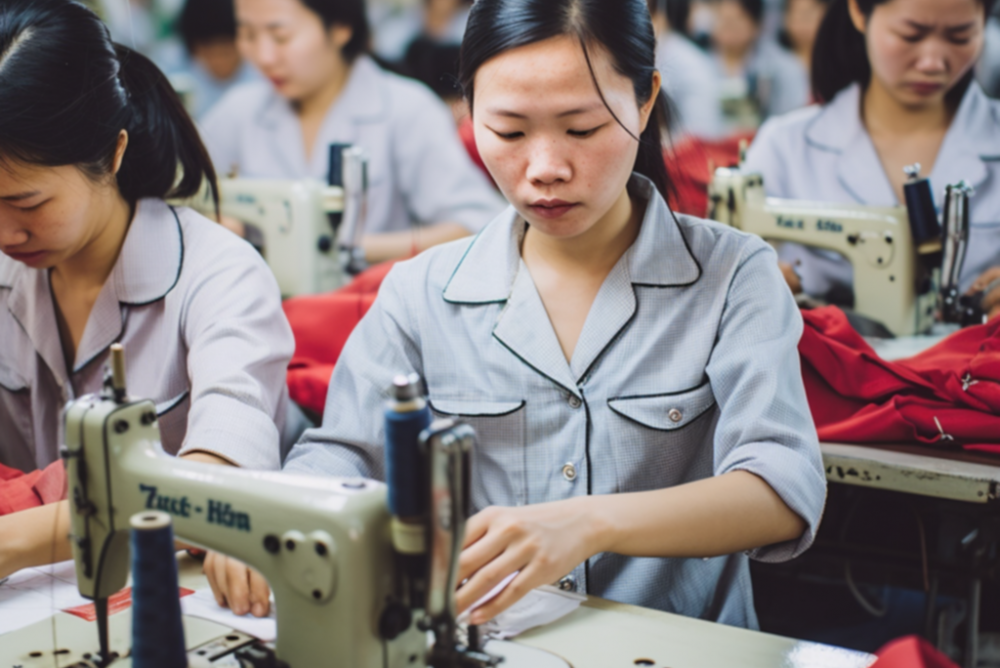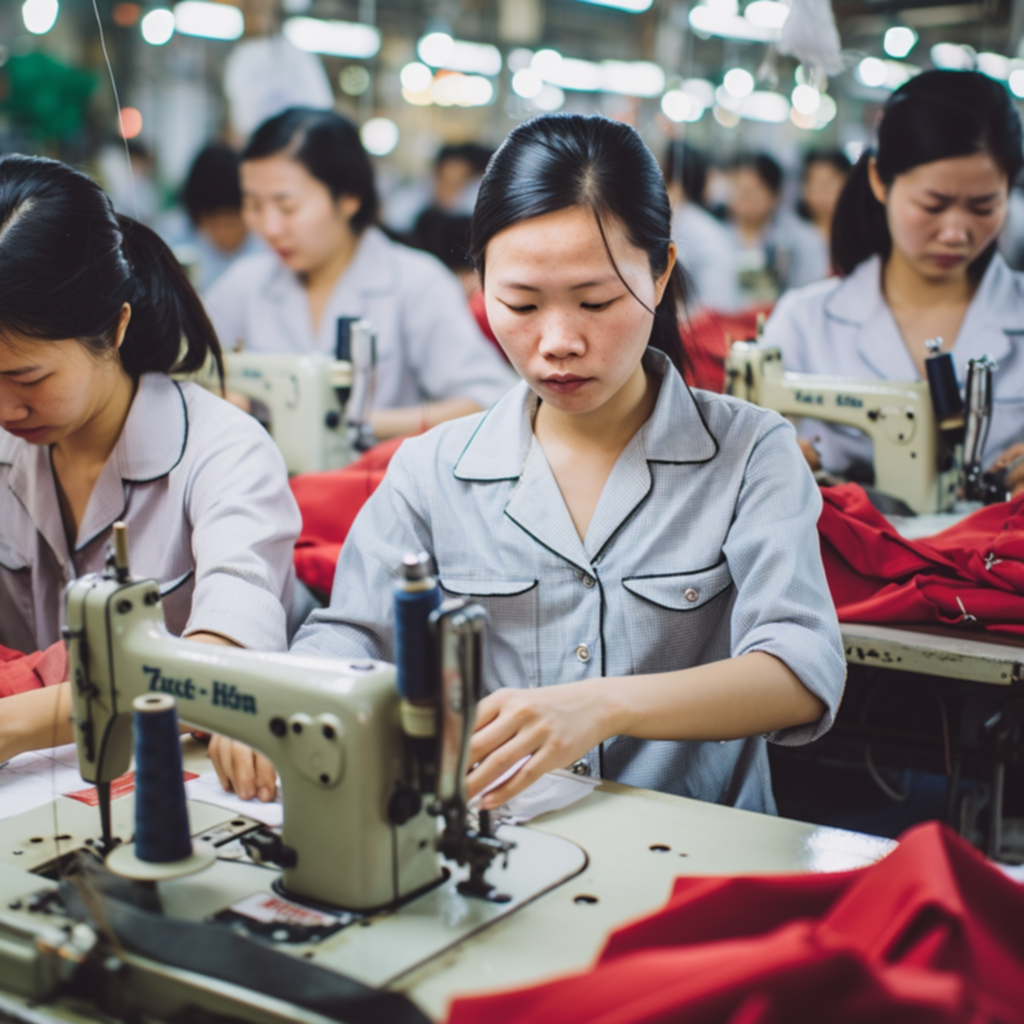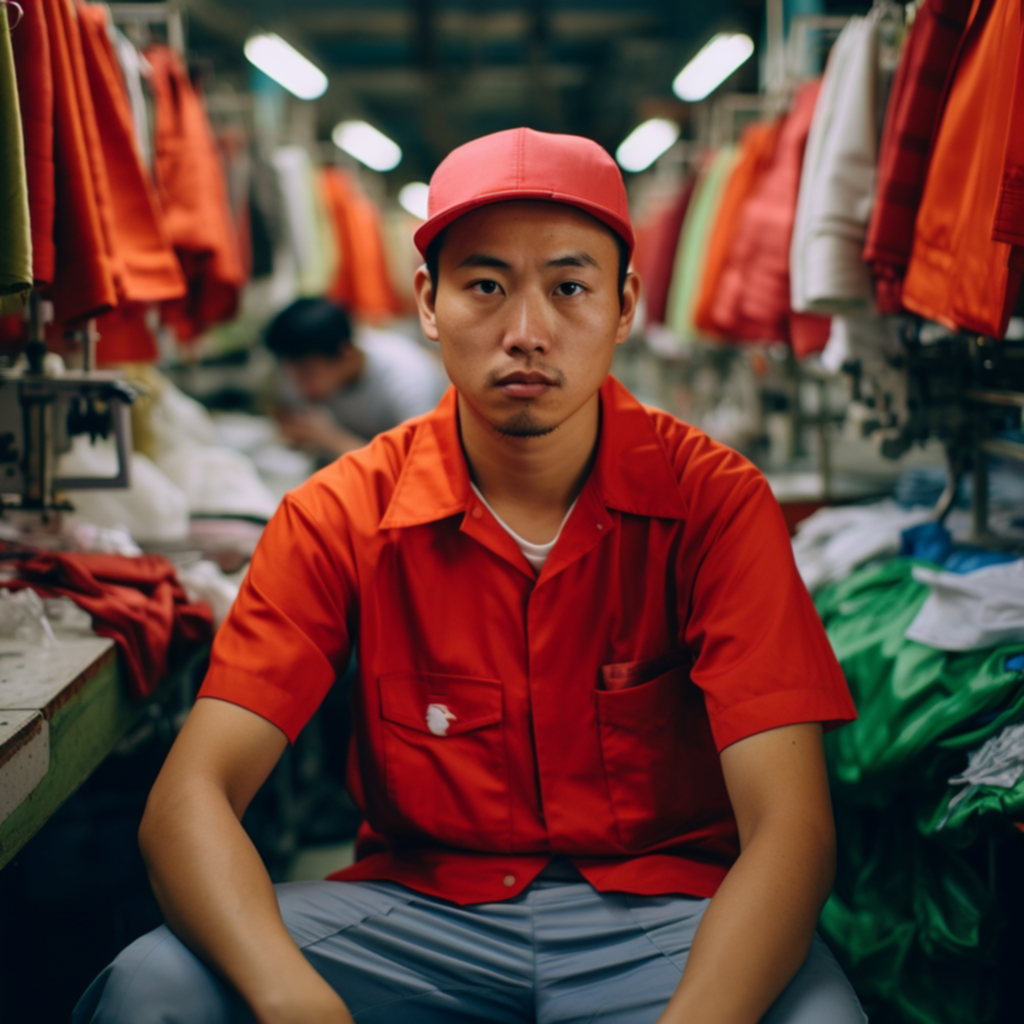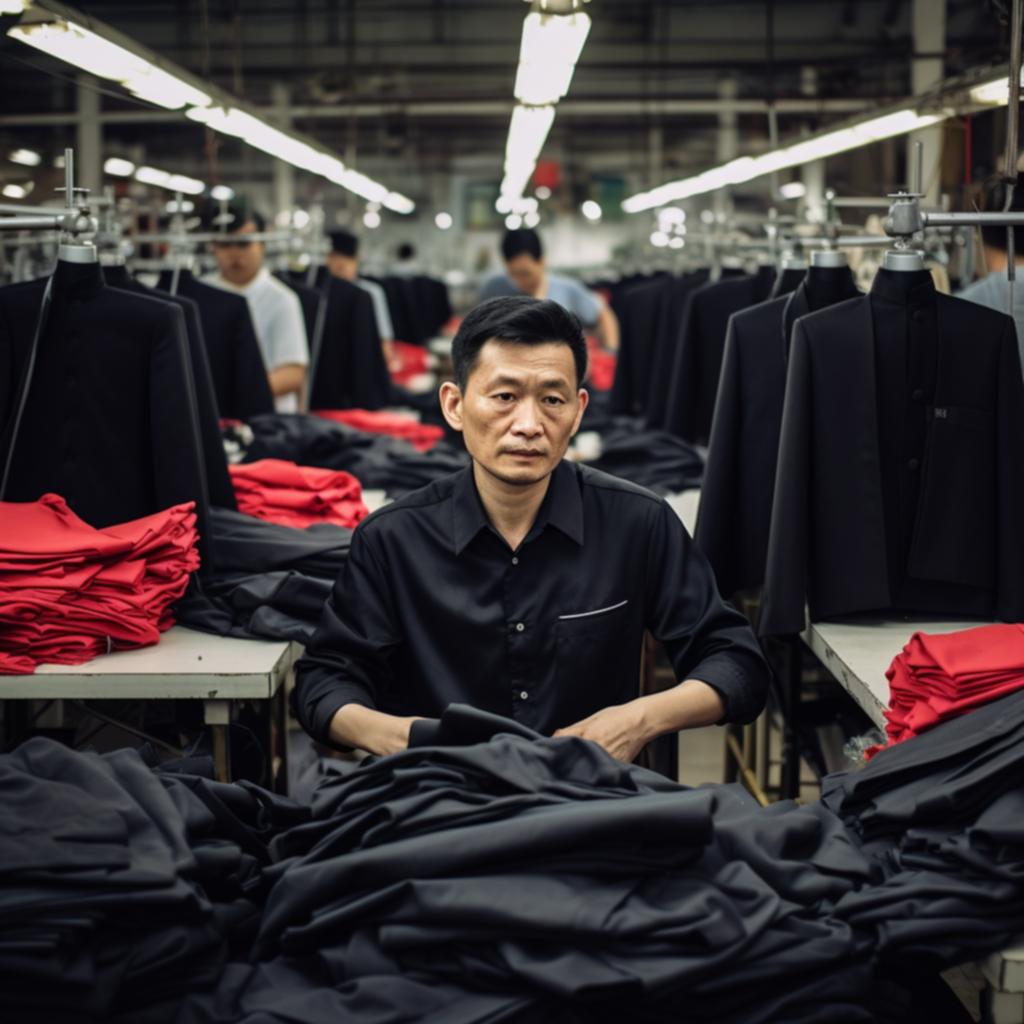Inside China's Clothing Manufacturing: A Deep Dive into its Evolution and Future


Delving into the clothing industry, it becomes clear that its beating heart lies in China. The land of the Great Wall, renowned for its fascinating cultural tapestry and spectacular advancements in technology, leads the world's textile and apparel industry.
This supremacy has been achieved through numerous factors, including large-scale production capabilities, a dedicated workforce, and technological integration into the manufacturing processes. Despite facing challenges on the environmental and ethical fronts, China remains the global pivot around which the clothing industry revolves.
This article endeavors to unravel the intricacies of China's thriving clothing manufacturing industry. By understanding the history of this industry, key production regions, manufacturing processes, and emerging trends, we can gain a clearer picture of how China has emerged as the globe's clothing production powerhouse.
Brief History of Clothing Manufacturing in China
China’s journey to becoming the world's clothing manufacturing powerhouse has its roots steeped in history. Going back to the era of the Silk Road, China has been a prominent player in the textile trade, earning recognition for its intricate silk fabrics. However, the large-scale industrial manufacturing of clothing that we see today began to take shape in the late 20th century.
Post-1978, the implementation of economic reforms under Deng Xiaoping set the stage for the emergence of China as a global manufacturing hub. The liberalization policies attracted foreign direct investment (FDI), igniting a boom in the manufacturing sector, especially in textiles and clothing.
In the 1990s and early 2000s, China's clothing industry witnessed an exponential growth, boosted by the country's accession to the World Trade Organization (WTO) in 2001. With the phasing out of the Multi-Fibre Arrangement (MFA) in 2005 that previously imposed quotas on exports, China's share in the global clothing market skyrocketed.
Since then, China's dominance in the clothing manufacturing sector has been unassailable. It has evolved into an integral part of the global supply chain, catering to both high-end fashion brands and fast-fashion retailers alike.
As we delve further into our exploration, the next section will shed light on the key regions in China that form the backbone of its clothing manufacturing industry. Stay tuned to learn more about the hubs that drive China's clothing production.
Key Regions for Clothing Production in China
China’s vast landscape is punctuated with numerous industrial regions, each with their unique strengths and specializations. In the realm of clothing manufacturing, certain areas have emerged as crucial hubs due to their strategic locations, labor availability, and infrastructure.
Guangdong Province: Often dubbed as the 'world's factory', Guangdong has been at the forefront of China's manufacturing boom. The province is home to several bustling industrial cities, with Guangzhou and Shenzhen leading in clothing production. Their access to the Pearl River Delta, coupled with a robust infrastructure, makes them preferred destinations for clothing manufacturers.
Zhejiang Province: Known for its silk production, Zhejiang hosts numerous textile and apparel factories. Cities like Hangzhou and Yiwu are globally recognized for their high-quality textile products. Yiwu, often referred to as the 'sock city', reportedly produces about a third of the world's socks.
Jiangsu Province: Jiangsu, specifically the city of Suzhou, is famous for its silk embroidery and textile industry. Its location near Shanghai provides easy access to one of the world's busiest ports, facilitating the transportation of goods.
Fujian Province: Renowned for its sportswear production, Fujian, particularly the cities of Quanzhou and Xiamen, hosts numerous clothing factories. These factories cater to both domestic and international brands.
Shandong Province: Shandong, known for its cotton production, is a significant contributor to China's textile and clothing industry. The city of Qingdao, in particular, has a substantial number of garment factories.
These regions, each with their distinct strengths, collectively fuel China's clothing manufacturing prowess. Now, let's take a closer look at the step-by-step process of how clothing is made in these factories.

The Process of Clothing Manufacturing
The clothing manufacturing process in China is meticulously coordinated, involving various steps from design to distribution. Here's a breakdown of the different stages:
Design and Prototyping: The process begins with fashion designers creating sketches or using computer-aided design (CAD) software to visualize the clothing. Once the design is finalized, a prototype or sample is made for evaluation.
Raw Materials Sourcing: Depending on the design, appropriate fabric and accessories like zippers, buttons, and threads are sourced. China's extensive network of suppliers facilitates easy procurement of diverse fabric types, from silk and cotton to polyester and wool.
Fabric Cutting and Sewing: After the fabric is pre-treated to prevent shrinking and dye bleeding, it is cut into specific shapes using patterns made from the design. These pieces are then stitched together, often in assembly-line fashion, where each worker is responsible for a specific task.
Key Steps in the Sewing Process
- Seaming: Joining fabric pieces together
- Hemming: Sewing the edges of the fabric to prevent fraying
- Button attaching and buttonhole making
- Labeling: Adding brand and care labels
Dyeing and Printing: If the fabric wasn't pre-dyed, it's dyed after sewing. Printing, whether it's screen printing, heat transfer, or digital printing, is done as per the design requirements.
Quality Control and Packaging: Each garment is thoroughly inspected for quality, checking the stitching, sizing, and overall finish. Faulty items are discarded or repaired. After passing quality control, the clothes are ironed, folded, and packaged for distribution.
Role of Technology in China's Clothing Manufacturing
Technology is revolutionizing every aspect of our lives, and the clothing manufacturing sector is no exception. The incorporation of innovative technologies is reshaping China's clothing manufacturing landscape, leading to improved efficiency, quality, and sustainability.
Computer-Aided Design (CAD): CAD software significantly expedites the design and prototyping process. Designers can use these tools to create detailed, 3D virtual models of garments, allowing for rapid iterations and improvements.
Automation and Robotics: Automation technologies, like automated sewing and cutting machines, are increasing productivity while reducing the reliance on manual labor. Robotics has also started to make inroads in the industry, with robots capable of performing tasks like sewing and fabric handling.
Artificial Intelligence (AI): AI, along with machine learning, is being utilized for tasks such as trend forecasting, inventory management, and defect detection in quality control, contributing to more accurate decision-making and efficient operations.
Sustainable Technologies: With growing concerns about the environmental impact of the clothing industry, manufacturers are turning to technologies like waterless dyeing and 3D printing to reduce waste and conserve resources.
Environmental and Ethical Considerations
While China's clothing manufacturing industry has been a significant driver of economic growth, it has also raised environmental and ethical concerns that can't be overlooked.
Environmental Impact
The textile industry is one of the most polluting industries worldwide, with significant contributions to water pollution, air pollution, and waste generation. For instance, dyeing fabrics is a water-intensive process that often involves harmful chemicals, which, if not properly treated, can end up contaminating water bodies.
Moreover, the industry's high energy consumption, primarily from coal, contributes to greenhouse gas emissions, exacerbating climate change.
Ethical Concerns
On the ethical front, issues such as low wages, poor working conditions, and the use of child labor have often been associated with the clothing manufacturing sector. While the situation has improved over the years, thanks to regulatory measures and increased scrutiny from international buyers, challenges persist.
It's crucial to note that many Chinese manufacturers are making concerted efforts to address these issues. From investing in cleaner, more efficient technologies to implementing more robust labor policies, steps are being taken towards more sustainable and ethical practices.
The Future of Clothing Manufacturing in China
As we gaze into the future, several factors will shape the course of China's clothing manufacturing industry.
Sustainability: As environmental and ethical concerns take center stage, the focus on sustainable practices will intensify. This will involve the adoption of cleaner technologies, more efficient use of resources, and improved labor practices. The use of recycled materials and more sustainable fibers like organic cotton and hemp is also likely to increase.
Digitalization and Industry 4.0: The integration of technologies like AI, IoT (Internet of Things), and blockchain will continue to transform the industry. From smart factories that optimize production in real-time to blockchain-enabled traceability systems that ensure transparency in the supply chain, the digitization of the clothing industry is set to accelerate.
Shifting Trade Dynamics: With labor costs rising in China and the ongoing trade tensions with the U.S., some clothing production is shifting to other countries like Vietnam and Bangladesh. However, given its robust manufacturing ecosystem and technological prowess, China is likely to retain a significant share of the global clothing market.
Domestic Market Growth: As China's middle class expands, domestic demand for clothing is set to rise. This presents a huge opportunity for manufacturers to cater to the home market, which has a growing appetite for high-quality, fashionable clothing.
The future of China's clothing manufacturing industry promises to be as dynamic and exciting as its past. As we conclude our exploration, let's recap what we've learned and reflect on the insights gained.

Conclusion
The story of clothing manufacturing in China is a compelling narrative of transformation. From humble beginnings to becoming the world's leading clothing manufacturer, China's journey has been marked by strategic investments, technological advancements, and a workforce committed to driving growth.
Yet, the path forward is not without challenges. Environmental and ethical concerns demand a shift towards more sustainable and humane practices. The integration of advanced technologies, evolving trade dynamics, and the rise of a prosperous domestic market will shape the future of this industry.
As we pull back the curtain on China's clothing manufacturing industry, it's clear that it's not just about stitching fabric pieces together. It's about the interplay of history, geography, economics, and technology. It's about striving for progress while respecting the planet and its people. And as consumers, it's about understanding the journey our clothes make before they reach us.
Frequently Asked Questions (FAQs)
What makes China a leading country in clothing manufacturing?
China's dominance in clothing manufacturing can be attributed to its large, skilled workforce, comprehensive supply chains, competitive pricing, and extensive manufacturing capabilities. Additionally, its strategic location with easy access to raw materials and major shipping routes aids in its global reach.
What are the main clothing manufacturing regions in China?
Key clothing manufacturing regions in China include Guangdong Province (Guangzhou, Shenzhen), Zhejiang Province (Hangzhou, Yiwu), Jiangsu Province (Suzhou), Fujian Province (Quanzhou, Xiamen), and Shandong Province (Qingdao).
How is technology changing China's clothing manufacturing?
Technology is revolutionizing China's clothing manufacturing through Computer-Aided Design (CAD), automation and robotics, artificial intelligence (AI), and sustainable technologies. These innovations enhance efficiency, quality, and sustainability while reducing reliance on manual labor.
What are the environmental and ethical issues in China's clothing manufacturing industry?
The industry faces environmental challenges such as water and air pollution, energy consumption, and waste generation. Ethical issues include low wages, poor working conditions, and, in some cases, child labor. However, many manufacturers are implementing measures to address these issues.
What does the future hold for clothing manufacturing in China?
The future will see increased focus on sustainability, digitalization and Industry 4.0, shifting trade dynamics, and growth of the domestic market. As environmental and ethical considerations gain prominence, sustainable practices and cleaner technologies are expected to become more prevalent.





-500x500.jpg)
-500x500.jpg)
-500x500.jpg)
-500x500.jpg)
-500x500.jpg)